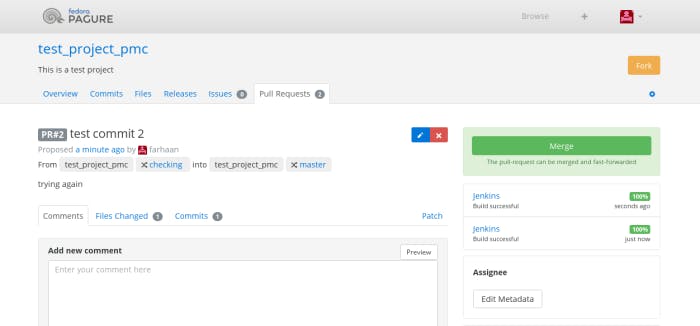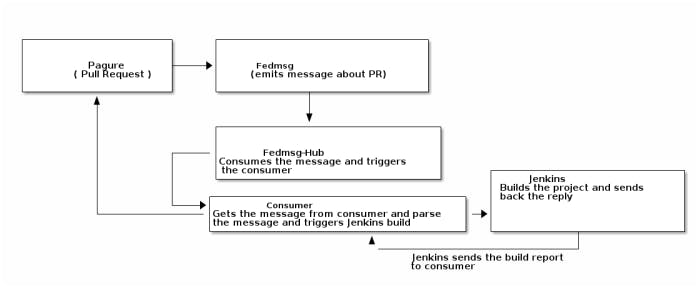Pagure CI
As my GSoC project one of the first goals is getting CI to Pagure. In my previous post I have been blogging about getting Fedmsg to work, Configuring Jenkins and my favorite Poor Man’s CI. Well, Poor Man’s CI evolved into Slightly Richer Man’s CI and now Pagure CI.
This is how it started I was trying to test how Poor Man’s CI works and how can I actually integrate it, while doing that I hit a deadend when Poor Man’s CI would not respond to local Pagure instance because there is no GIT server running. So one cannot clone git repo with a normal URL, I landed up on a really amazing utility called Git Daemon, it gave me some hope but it didn’t last long, that also has disadvantage that the URL should be a git:// URL.
I somehow thought I needed to set my Pagure as an application and then I can make common clone commands. I tried using that and I am still in the process of doing it , I am still setting gitolite on that front.
While doing that and because of my lazy nature I found a neat hack and it was , my Poor Man’s CI was running on localhost and so was my Jenkins but the I made a repo on pagure.io. The only thing to understand here is the Fedmsg should listen to all the msgs and Fedmsg plugin should be enabled in the repository on Pagure.
So, recap you have :
1. fedmsg-relay running and listening to all the production messages.
2. fedmsg-tail –really-pretty running to check the message is being read.
3. fedmsg-hub running in Poor man’s CI which is consuming the message and configure to consume new pull request.
Voilla! it worked and there you go I got a build there and the flag is attached to it.

After talking to Pierre we arrived a on conclusion that we need a way to either merge the two application or make Pagure talk to Poor Man’s CI. I had a lot of doubts to achieve it, later Pierre gave me “Food for thought ” which was
“If we are able to gather all information from Pagure and Poor Man’s CI could get that database access would it not do the deal?”
The way PMCI handles it is the consumer written for fedmsg-hubs parses the message received and according to the message received it triggers Jenkins build and does all the work and it just queries a single table.
Pierre wanted no individual UI for PMCI and so we made it a hook , now a person can enable the hook and add the useful information required. I brought the whole consumer as it is from PCMI. Consumers need to get registered in setup.py and dependencies needs to be build up using python setup.py develop which does a lot of magic behind the scenes.
One of the dependencies is python-jenkins library, which provides various functionality. The whole PMCI is reduced to three files in Pagure. The most important being consumer.py , I gathered a lot of functionalities into a lib/pagure_ci.py and made a model in hooks/jenkins_hook.py. Since I got lot of functionalities in place the only thing then I struggled with was because of my poor understanding of Sqlalchemy. I read up a lot and was able to debug the code and make it work.
When you check your code in production @fedora #gsoc #JustFedoraThings pic.twitter.com/zoeaa898JH
— Farhaan Bukhsh (@fhackdroid) June 2, 2016
The most peculiar thing I came across was even the server needs to be run in the virtualenv, since Jenkins library is installed in that. Once that is done its like a train of dominoes , one thing will lead to another . I am trying it to show you diagrammatically.

